Salpiglossis: description, planting and care
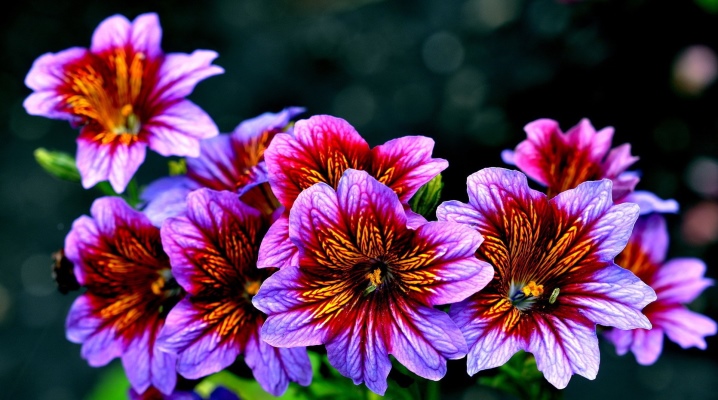
Salpiglossis is a beautiful plant with a variety of color shades. The highlight of its flowers is a delightfully elegant golden mesh. If you see contrasting patterns in a combination of delicate light petals and the brightest core with an original "marble" pattern, you should know that this is salpiglossis.

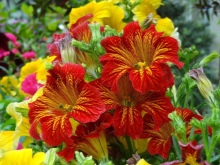
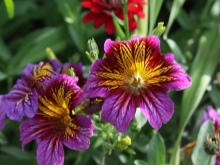
Peculiarities
Salpiglossis (Salpiglossis) is a plant of the Solanaceae family, which is represented by biennials, annuals and perennials. The genus includes up to 20 species. Its closest relatives are eggplants, potatoes, hot peppers. The culture spread in the South American regions (Peru, Chile, Argentina). The original name was derived from 2 words of Greek origin - "pipe" and "tongue" (pipe-speaking). The time of the beginning of cultivation is 1820.
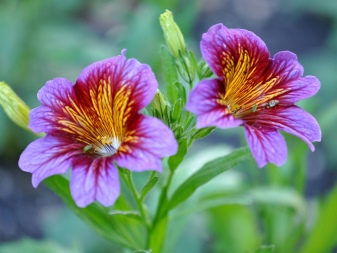
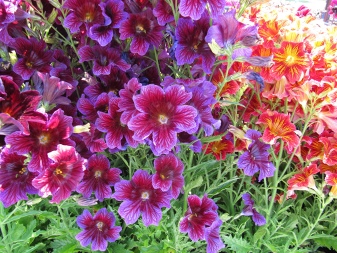
In horticulture, 1 species of this genus is cultivated - salpiglossis notched. The height of the straight shoots of the plant reaches 1 meter. Shoots are graceful, refined, branched, covered with sticky hairs. The leaf blades located above are narrow, sessile, with solid, wavy or serrated edges. Basal leaves are elongated, petioled, notched-lobed.
Single funnel-shaped flowers with a 5-lobed limb, resembling a gramophone, reach 50 mm in diameter. The color of this "musical" flower is varied - from blue to cream shades with a beautiful marble pattern with golden veins. Blooms from June to September.
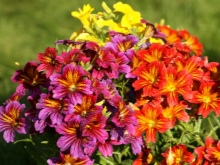

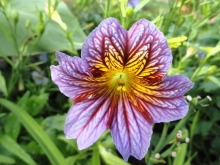
The fruit is formed in the form of rounded bolls containing small seeds. In mid-latitudes, the plant is usually grown as a biennial or annual. At the same time, on open soil it is cultivated as an annual, and in an apartment - as a biennial.
Its various varieties and hybrids are traditionally grown indoors, in particular, low salpiglossis and superbissima.
The plant usually blooms within 3-4 months. The duration of the flowering period lends itself to increasing.

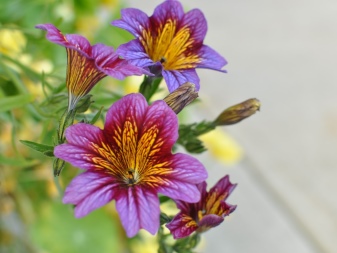
Varieties
The main type of plant is salpiglossis notched, forms several cultivated forms:
- large-flowered, up to 1 m tall, with a branched stem system and large flowers;
- superbissima - medium-growing (up to 0.6 m) culture with unbranched peduncles, large inflorescences with corrugated corolla petals;
- low - with dense bushes growing up to 0.4 m, covered with many flowers.
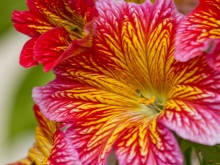
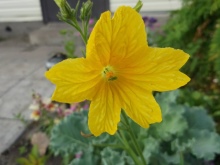
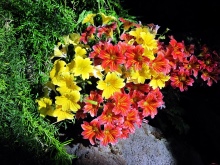
In gardening, there are varieties and hybrid varieties:
- Kew Blue - a low-growing culture (about 0.3 m) with purple flowers, a dark core and a golden cobweb mesh;

- "Casino mix" - neat bushes up to 0.5 m in height, with branched stems, a varied floral tone;
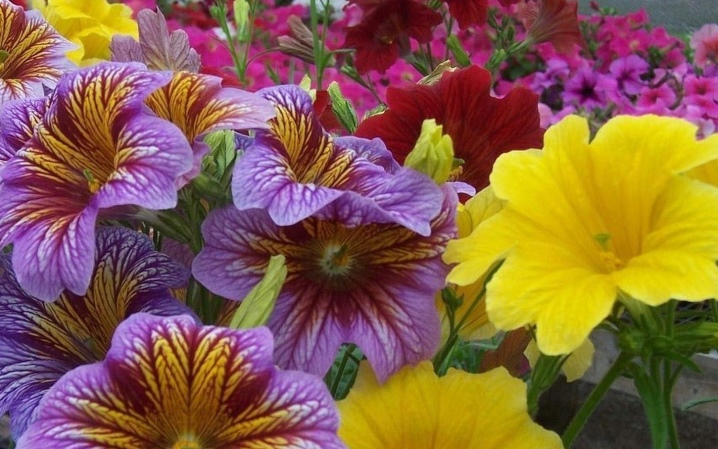
- "Festival" and "Flamenco" - compact plants (up to 0.3 m) with inflorescences of rich colors;
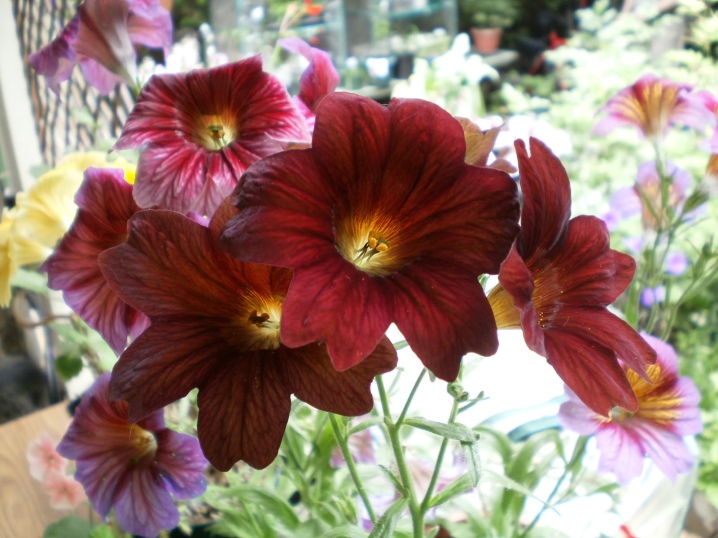
- "Bolero" - luxuriously blooming culture up to 0.6 m high, with a strong stem;
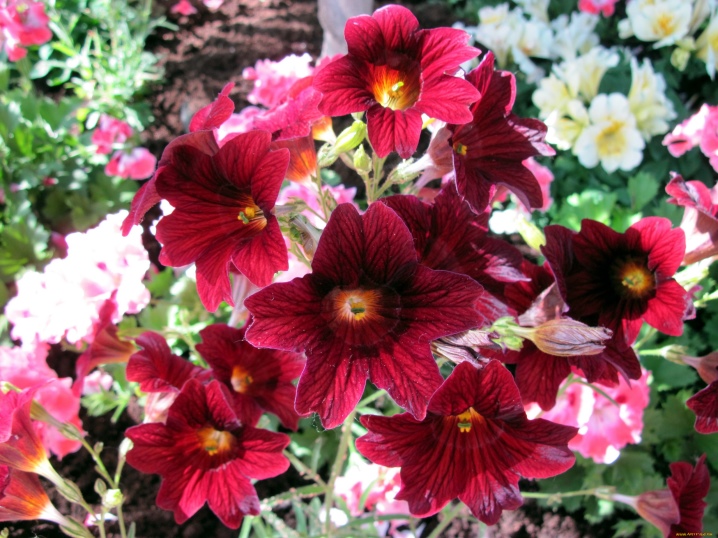
- "Alibaba" - a tall (up to 0.8 m) annual, long unfading in cut, with flowers sharply contrasting with their golden veins;
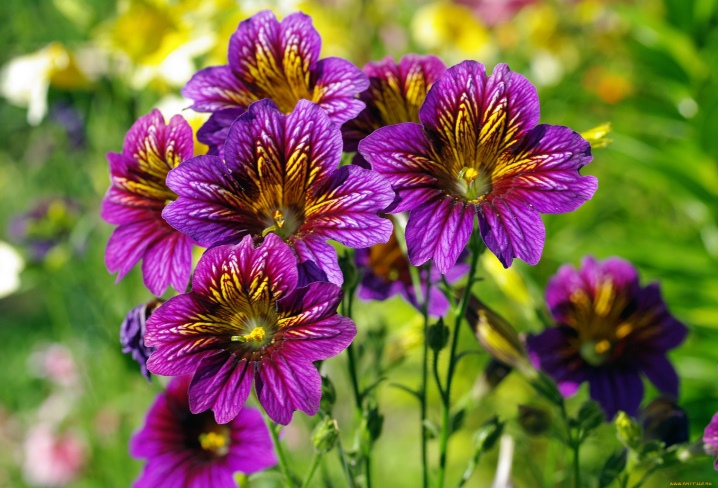
- Superbissimagrowing up to 0.6 m;
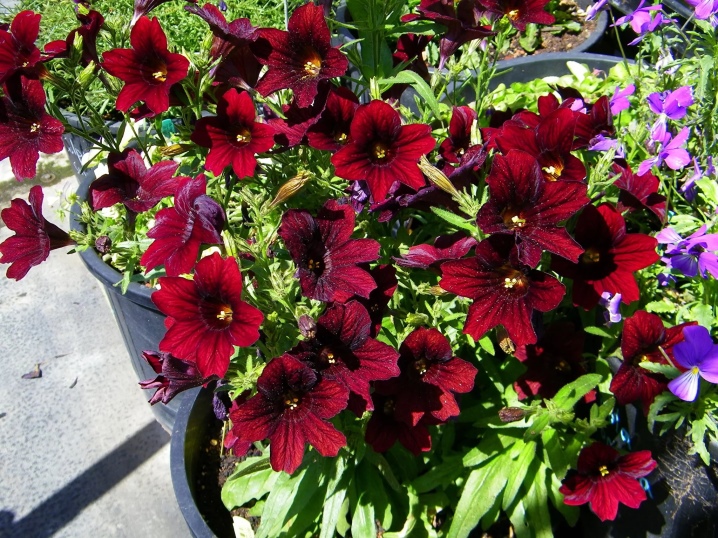
- "Velvet Dolly" - small, up to 0.4 m tall, bushes, with wonderful velvety flowers up to 6 cm in diameter;
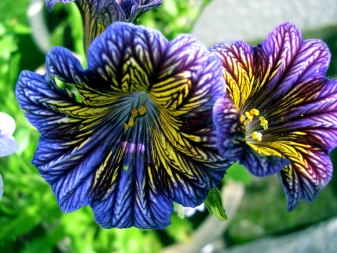
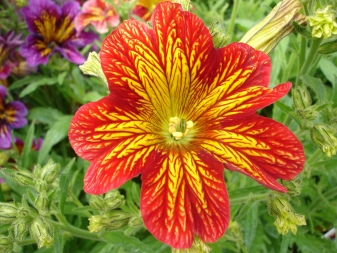
- "Fireworks" - bushy and profusely flowering plant, up to 0.6 m tall, with flowers of bright shades and their characteristic golden or purple-colored veins;
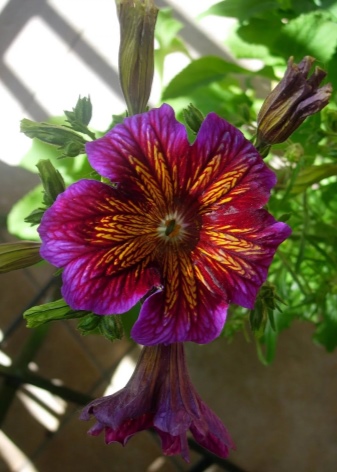
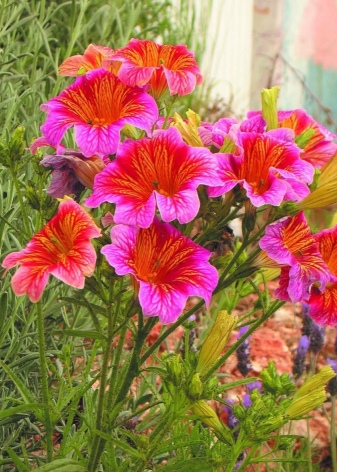
- "Magic" - medium growth culture (up to 0.6 m) with bright scarlet, white or purple flowers, with elegant marble patterns of golden veins.
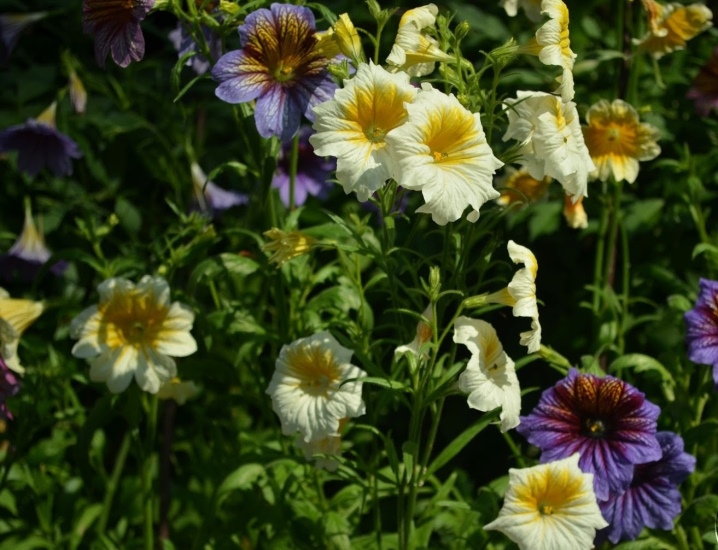
Perennial salpiglossis prefers extremely warm and mild climatic zones.
Growing seedlings
When growing seedlings at home, it is important to regularly ventilate it and remove condensation from the surface of its shelter. Usually, the first shoots appear 2-3 weeks after sowing. It is not worth removing the film completely. At first, it is removed periodically - for 1–2 hours, then for 3–4 hours. It is completely removed when the seedlings fully adapt to environmental conditions.
After the appearance of the first pair of leaves, a pick is carefully carried out into separate small containers. After the shoots are confidently taken in, the tops of the plant are pinched, which increases its bushiness.
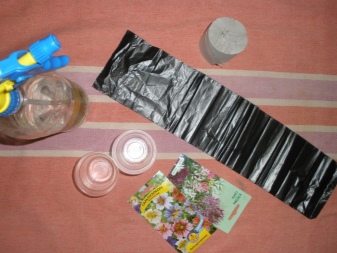
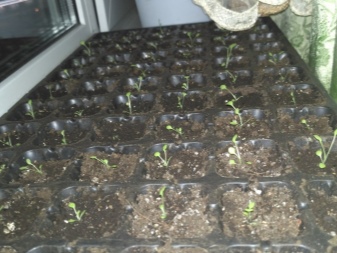
Salpiglossis takes moderate watering - the substrate should not be acidic, dry out or be excessively moist.
The components for preparing the substrate include 1 part of sod land, half of wood ash, 1 part of fine-grained sand, crushed peat (half a glass of an ingredient per glass of soil mixture).
To destroy fungal spores, the substrate is calcined in the oven.
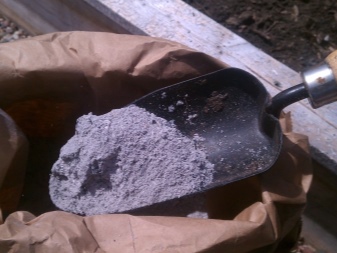
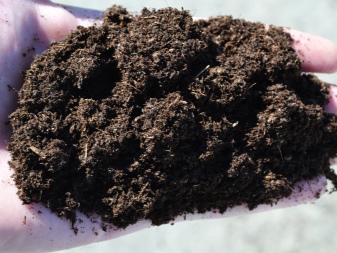
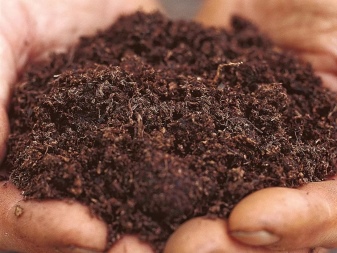
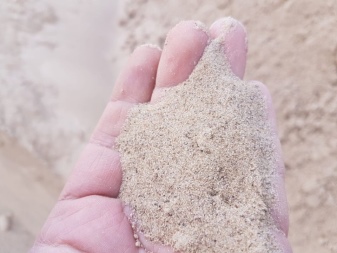
How to plant in open ground?
Seed planting in open soil is carried out exclusively in the southern regions - the culture does not react well to cold. When grown without seedlings, flowering begins later, the buds form around the second decade of summer.
Strengthened seedlings are planted in the garden or flowerbed around May. By this time, the seedlings should harden and have 2-3 leaves.
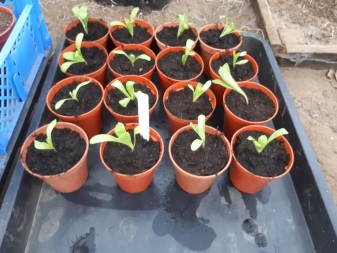
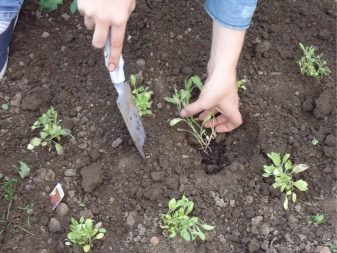
Important nuances:
- before planting seedlings, experienced gardeners dig up the planting zone approximately on a shovel bayonet and apply complex mineral fertilizers;
- when digging, they must break the lumps, loosen and slightly moisten the soil;
- the transplant is carried out, keeping the earthen clods of plants;
- the young are slightly buried, sprinkled and carefully tamp the soil around the sprout;
- it should be watered with warm water, and the soil is covered with a layer of mulch, consisting of good garden compost (peat, chopped straw);
- in the process of plant growth, they are tied to supports, especially tall types of culture require this.
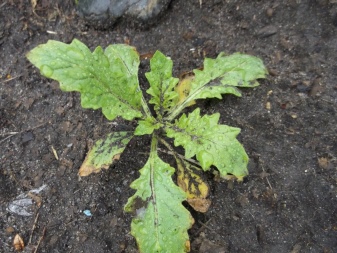

Planting seedlings ready for this into open soil is carried out when the possibility of frost is completely excluded. Usually, the landing time falls on the 2nd or 3rd decade of May. For disembarkation, a well-lit, wind-protected place is required. The presence of humus is necessary in the soil, and its acidity should be neutral or slightly acidic.
The landing site is prepared about a week before the event. Preparation includes digging, adding sand, peat, wood ash to the soil. A distance of 25-30 cm is maintained between the holes. The depth of the holes should accommodate the root system of the plant, including a lump of "native" earth. The procedure should be carried out carefully - the culture does not perceive the transplant well. This is followed by watering the plant.
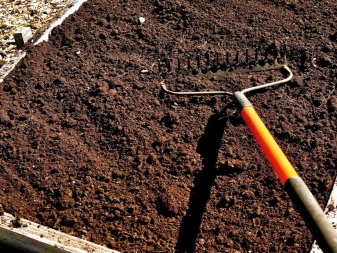
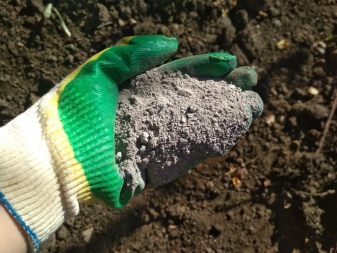
In warm weather, salpiglossis can multiply by self-seeding. The seeds are harvested in the fall, in October. For this, large inflorescences are specially kept on the bushes. After the withering process, a spherical fruit-box appears, which is cut off, and then dried in a dry and unlit place.
The bushes are removed. The seeds are stored in cloth bags and sown in the spring. The seeds retain their germination ability for 4-5 years.
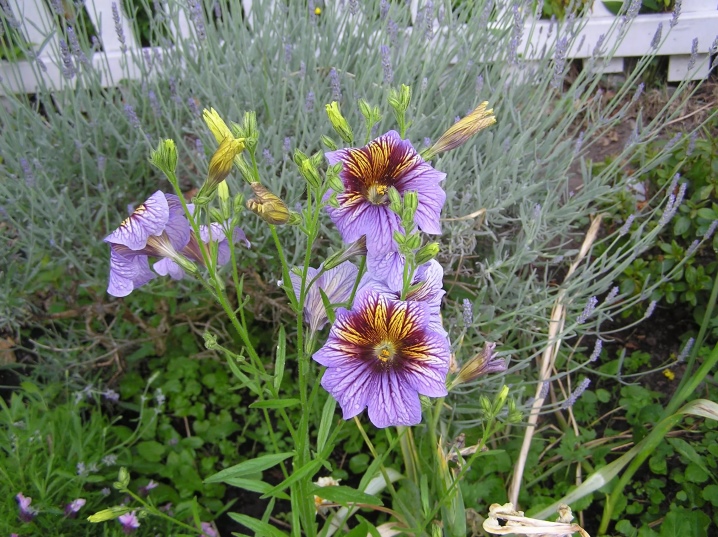
How to take care of it properly?
Care in the course of growing crops in the open field does not require significant effort and time. Salpiglossis is not a capricious plant. However, this fact does not eliminate the observance of certain rules when caring for him.
- Watering is carried out by bringing in water when the top layer of the earth is dry. It is not recommended to fill the plant, leaving puddles near it, as this provokes the development of diseases. Root decay is treated exclusively in the early stages. Otherwise, the bush will have to be removed.
- The plant reacts sharply negatively to drought, stagnation of water in the ground and a drop in temperature to minus values.
- In summer, the plant is watered once a day, and in hot weather, evening spraying is recommended.
- In the spring-autumn period, watering is done 2-3 times a week. To do this, use warm and well-settled water. At the end of the procedure, the surface layer of the site should be loosened, while weeding is carried out.
- Regular pinching of the bushes stimulates their more lush flowering.
- Do not forget about the timely cutting off of wilting flowers. This will ensure their bloom until October.
- Top dressing is carried out several times a season, using complex mineral fertilizers for flowering crops. Wood ash is used as organic matter.
- To create a layer of mulch (about 1 cm), sawdust, cut straw, peat are suitable. Mulching helps to retain moisture in the soil, especially in drought conditions, and also minimizes weed growth. Mulch is added at the end of loosening the moist and slightly dried soil.
- Loosening of the soil contributes to the process of its aeration. It is produced shallowly so as not to harm the roots.

Watering
Excessive soil moisture causes the processes of decay of the root system. Watering is relevant, but only as the soil dries out, taking into account the specifics of the climatic zone and the frequency of precipitation. It is important to optimize the irrigation process, excluding excessive soil moisture.
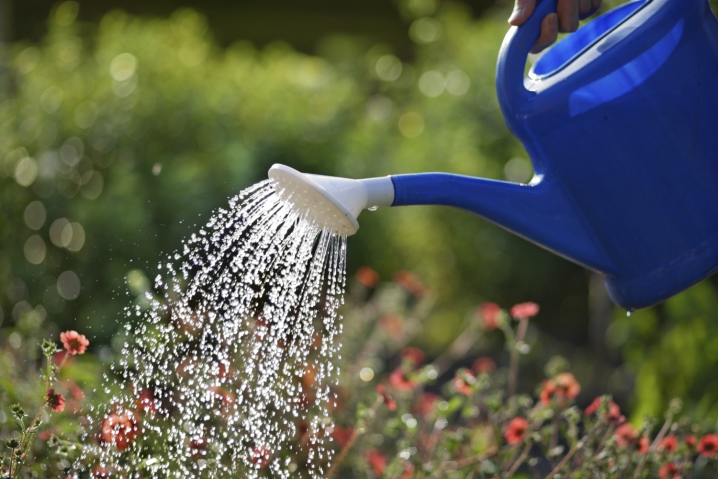
Top dressing
The optimal interval for the introduction of fertilizing compositions is 1 time in 12-14 days. For this, complex mineral mixtures are used. During the growing season, mixtures rich in nitrogen are used, and during budding and flowering, potassium and phosphorus are used. The ecological agent "Biohumus" has proven itself as a fertilizer for salpiglossis. The feeding procedure is not carried out on a hot day in the morning or in the evening.

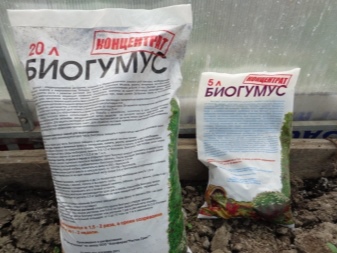
During and after flowering
During the flowering period, the bushes need regular potash and phosphorus feeding, the nitrogen level is lowered at this time. Faded buds must be removed from the bushes immediately. Correct abundant watering is no less relevant during this period, especially during periods of drought. The substrate should be moistened in the morning or evening. The flowering time of a culture grown by seedlings begins in the 2-3rd decade of June, ending with the onset of the first frosts. When planted by seed, flowering begins around July. Leaving after flowering is carried out in accordance with the previously given rules.
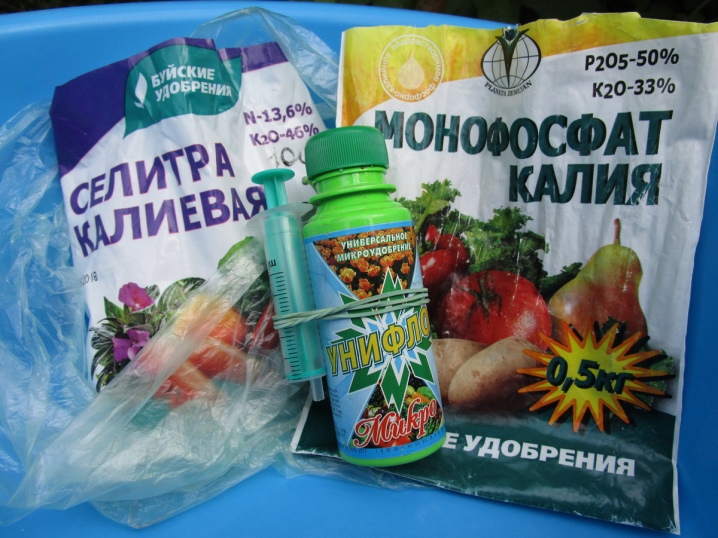
Bush formation
Annual shrubs are usually not shortened if they do not have rotten and affected branches. Pinching is done at an early stage of seedling growth and during the flowering of buds. It is useful to carry out timely feeding of the culture and water it regularly.

Wintering
As a perennial plant, salpiglossis is cultivated only in areas with mild and warm climates. In frosty winters, it is grown as an annual, since it dies after the onset of frost. If necessary, it is permissible in the fall to plant a bush in a small container (pot) and place it in the house. However, he will take root with great difficulty, a transplant for him is a significant stress.
So, the possible complications and their causes:
- rotting of the root system, the reason is excessive moisture (especially in winter);
- lack of flowering, reasons - lack of light and lack of moisture;
- yellowness on the leaves, the reasons are dry air and drying out of the soil surface.

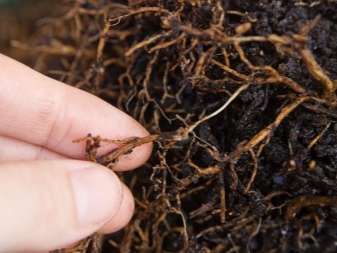
Diseases and pests
Aphids often appear on the plant. Reproducing rapidly, the parasites are located in the axils of the leaves, then moving to the buds.The plant begins to weaken, to a large extent loses its decorative effect. For the destruction of parasites, insecticides of 3 and 4 hazard classes are used. Stronger means, for example, level 2 ("Actellik"), are rarely used for pest control. Afraid of aphids and soap solution, under the influence of which parasites die (suffocate).
The insecticide treatment is usually repeated after 7-10 days. To protect against pests, folk remedies are often used in the form of decoctions of tobacco leaves, onion peels, and garlic tincture.
Aphids do not tolerate citrus odors, so spraying tangerine or orange peel broths on the bushes is effective against it. Bushes are sprayed with such broths for prevention once every two weeks.
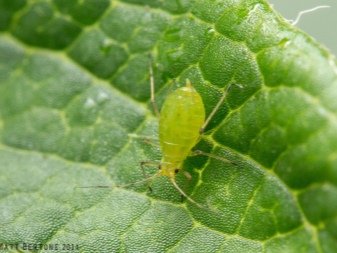
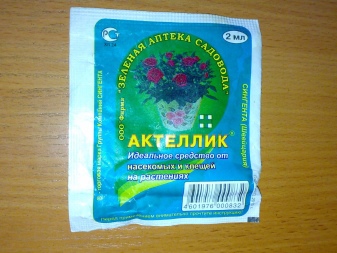
If you find a strong root defeat, you must immediately dig up the diseased bush and destroy it. The contaminated soil should be treated with a fungicide to kill fungal spores. Antifungal formulations "Ridomil", "Skor", "Topaz" and Bordeaux liquid are effective.
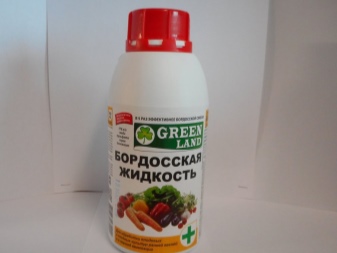
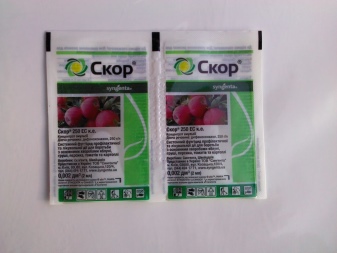
Use in landscape design
With the help of salpiglossis notched, wonderful compositions are created in summer cottages, flower beds, near coniferous plantings. The plant is wonderfully combined with ground cover species, for example, lobelia.
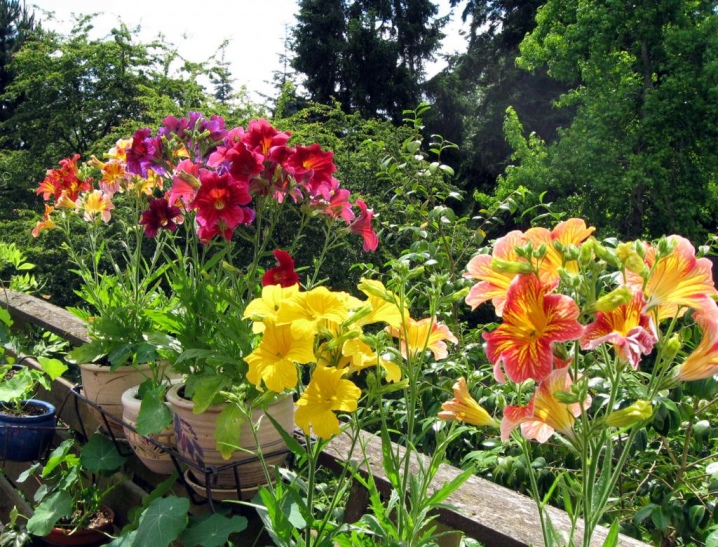
The abundance of bright colors of the gramophone buds of the plant harmoniously complements and enriches the elegance and beauty of marigolds, nasturtiums, petunias. Salpiglossis is often, and not in vain, planted near conifers with rich greenery (cypresses, spruces). Unforgettable compositions are made using companion plants such as chrysanthemums or flowers from the lily family.
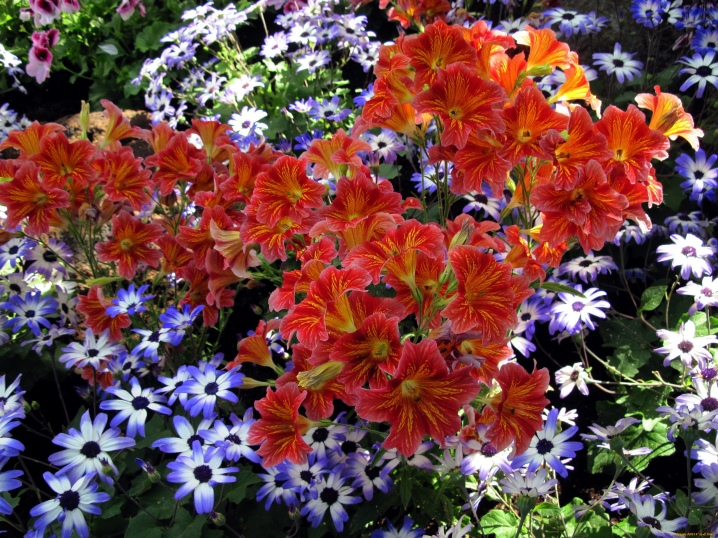
At the same time, the norms of humidity, illumination are carefully taken into account, and the periods of flowering of the flowers included in the composition are compared. Such compositions look great on flower beds, along paths, near gazebos.
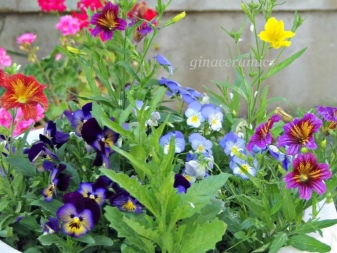
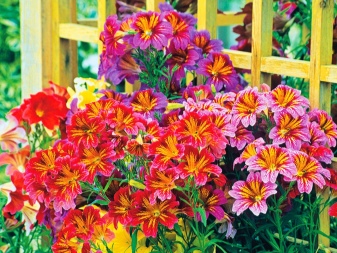
Low-growing varieties are appropriate and look great on window sills, balconies, verandas and just in bouquets.

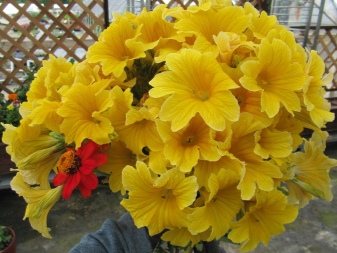
The picking of salpiglossis seedlings is presented in the video.







































































































The comment was sent successfully.